Grow Cucumbers at Home? Absolutely! Imagine biting into a crisp, refreshing cucumber you nurtured from seed to salad, right in your own backyard. Forget those bland, store-bought cucumbers – we’re talking about homegrown flavor that bursts with sunshine and freshness. This isn’t just about growing vegetables; it’s about connecting with nature, saving money, and enjoying the unparalleled taste of your own harvest.
For centuries, cucumbers have been cultivated across the globe, from their origins in India to their adoption by ancient Romans and Greeks. They’ve been prized not only for their culinary uses but also for their cooling and hydrating properties. Today, with rising food costs and a growing desire for sustainable living, learning to grow cucumbers at home is more relevant than ever.
But let’s be honest, gardening can seem daunting. That’s where this DIY guide comes in! I’m going to share simple, effective tricks and hacks that will empower even the most novice gardener to cultivate a thriving cucumber patch. Whether you have a sprawling garden or just a sunny balcony, I’ll show you how to overcome common challenges, maximize your yield, and enjoy a bountiful harvest of delicious cucumbers. Get ready to roll up your sleeves and discover the joy of homegrown goodness!
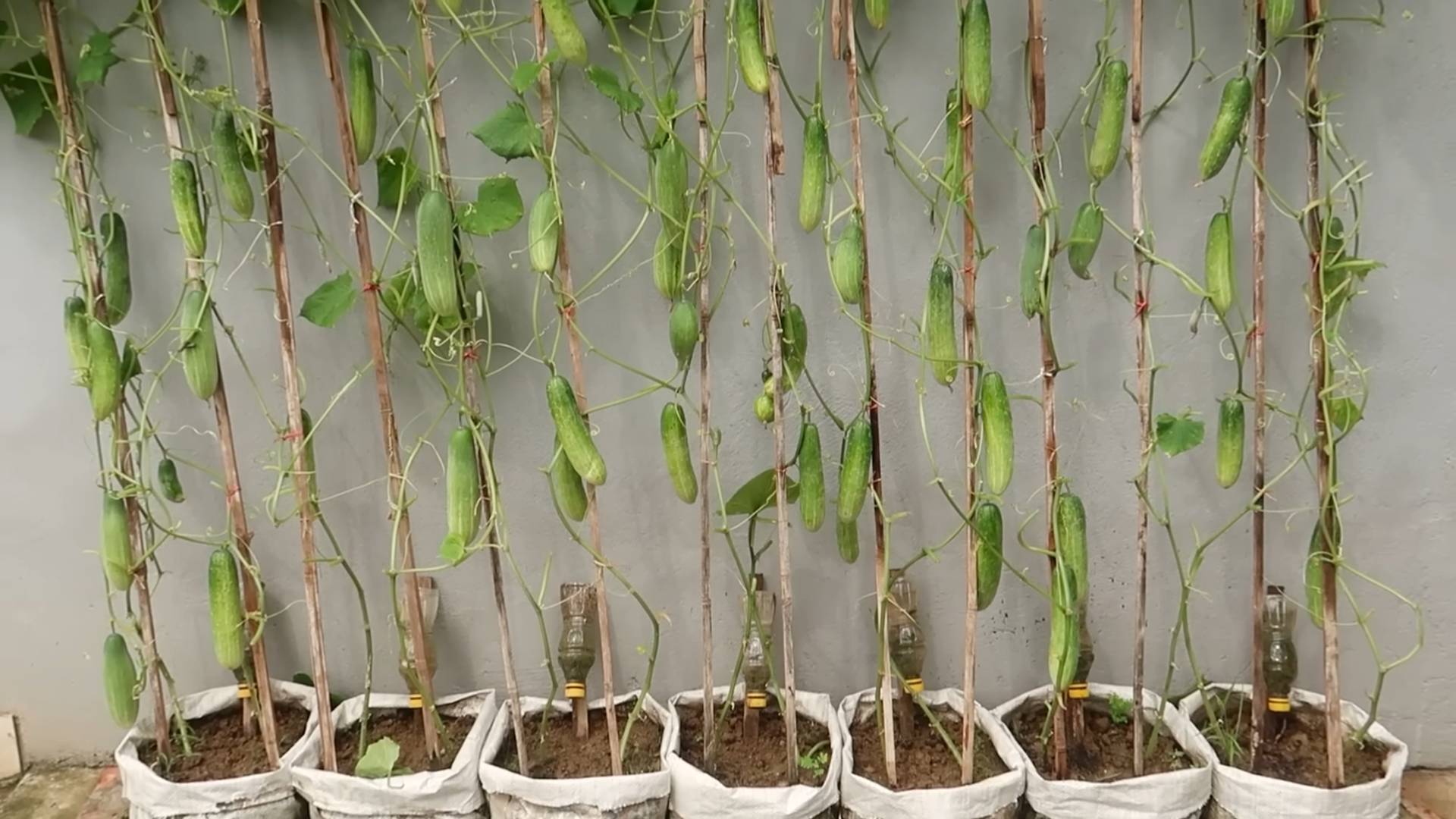
Growing Cucumbers Like a Pro: Your DIY Guide to a Bountiful Harvest
Hey there, fellow gardening enthusiasts! I’m so excited to share my tried-and-true methods for growing cucumbers right in your own backyard (or even on your balcony!). Forget those bland, store-bought cukes – nothing beats the crisp, refreshing taste of a homegrown cucumber. This guide will walk you through every step, from choosing the right variety to harvesting your delicious bounty. Let’s get started!
Choosing Your Cucumber Variety
Before we even think about planting, let’s talk cucumbers! There are so many varieties to choose from, and the best one for you will depend on your space, climate, and what you plan to do with your cucumbers.
* Slicing Cucumbers: These are your classic cucumbers, perfect for salads and sandwiches. They typically have smooth, dark green skin. Some popular slicing varieties include ‘Marketmore 76’, ‘Straight Eight’, and ‘Dasher II’.
* Pickling Cucumbers: These are smaller and stubbier than slicing cucumbers, with thinner skin and a slightly bumpy texture. They’re ideal for making pickles, of course! ‘National Pickling’, ‘Boston Pickling’, and ‘Bush Pickle’ are all great choices.
* Burpless Cucumbers: These varieties are bred to be less bitter and easier to digest. They often have thinner skins and fewer seeds. ‘Sweet Slice’, ‘Armenian’, and ‘English Telegraph’ are popular burpless options.
* Bush Cucumbers: If you’re short on space, bush cucumbers are your best bet. They grow in a compact, bushy form, making them perfect for containers. ‘Spacemaster’, ‘Bush Champion’, and ‘Salad Bush’ are all excellent choices.
My personal favorite? I love growing ‘Marketmore 76’ for slicing and ‘National Pickling’ for, well, pickling! They’re both reliable and produce tons of delicious cucumbers.
Preparing Your Planting Area
Cucumbers are sun-loving plants, so you’ll need to choose a spot that gets at least 6-8 hours of direct sunlight each day. They also need well-drained soil that’s rich in organic matter.
* Soil Preparation: Cucumbers thrive in soil with a pH between 6.0 and 7.0. Before planting, amend your soil with compost, well-rotted manure, or other organic matter. This will improve drainage, fertility, and water retention. I usually add a generous layer of compost and work it into the top 6-8 inches of soil.
* Spacing: Give your cucumber plants plenty of room to grow. For vining varieties, space plants 12-18 inches apart in rows that are 3-4 feet apart. For bush varieties, space plants 18-24 inches apart.
* Trellising (Optional but Recommended): Cucumbers are natural climbers, and trellising them has several benefits. It saves space, improves air circulation, and makes harvesting easier. You can use a trellis, fence, or even a tomato cage to support your cucumber plants. I highly recommend trellising, especially for vining varieties.
Planting Your Cucumber Seeds or Seedlings
You can start cucumber seeds indoors 3-4 weeks before the last expected frost, or you can direct sow them in the garden after the soil has warmed up to at least 60°F (15°C).
Starting Seeds Indoors:
1. Choose Your Containers: Use small pots or seed trays filled with seed-starting mix.
2. Sow the Seeds: Plant 2-3 seeds per pot, about ½ inch deep.
3. Water Gently: Keep the soil moist but not soggy.
4. Provide Light: Place the pots under grow lights or in a sunny window.
5. Harden Off: Before transplanting your seedlings outdoors, gradually acclimate them to the outdoor conditions by exposing them to increasing amounts of sunlight and wind over a period of 7-10 days.
Direct Sowing Seeds Outdoors:
1. Prepare the Soil: Make sure the soil is loose and well-drained.
2. Sow the Seeds: Plant 2-3 seeds per hill, about ½ inch deep. Space the hills according to the recommended spacing for your chosen variety.
3. Water Gently: Keep the soil moist until the seeds germinate.
4. Thin Seedlings: Once the seedlings emerge, thin them to one plant per hill.
Transplanting Seedlings:
1. Dig Holes: Dig holes that are slightly larger than the root balls of your seedlings.
2. Gently Remove Seedlings: Carefully remove the seedlings from their pots, being careful not to damage the roots.
3. Plant Seedlings: Place the seedlings in the holes and backfill with soil.
4. Water Thoroughly: Water the seedlings well after planting.
Caring for Your Cucumber Plants
Once your cucumber plants are in the ground, it’s important to provide them with the care they need to thrive.
* Watering: Cucumbers need consistent moisture, especially during hot, dry weather. Water deeply and regularly, aiming for about 1 inch of water per week. Avoid overhead watering, as this can lead to fungal diseases. Drip irrigation or soaker hoses are ideal.
* Fertilizing: Feed your cucumber plants with a balanced fertilizer every 2-3 weeks. You can also side-dress them with compost or well-rotted manure. I like to use a liquid fertilizer diluted to half strength.
* Weeding: Keep the area around your cucumber plants free of weeds. Weeds compete with your plants for water and nutrients. Mulching can help suppress weeds and retain moisture.
* Pest and Disease Control: Keep an eye out for common cucumber pests like aphids, cucumber beetles, and squash bugs. You can control these pests with insecticidal soap, neem oil, or by handpicking them off the plants. Common cucumber diseases include powdery mildew and downy mildew. To prevent these diseases, provide good air circulation, avoid overhead watering, and apply a fungicide if necessary.
Training Your Cucumber Plants (If Trellising)
If you’re using a trellis, you’ll need to train your cucumber plants to climb it.
1. Guide the Vines: As the cucumber vines grow, gently guide them towards the trellis and tie them loosely with twine or plant clips.
2. Prune Side Shoots: Prune off any side shoots that are growing too far away from the trellis. This will encourage the plant to focus its energy on producing cucumbers.
3. Remove Yellowing Leaves: Remove any yellowing or diseased leaves to improve air circulation and prevent the spread of disease.
Harvesting Your Cucumbers
The moment we’ve all been waiting for! Harvesting your cucumbers at the right time is crucial for getting the best flavor and texture.
* Harvest Time: Cucumbers are typically ready to harvest 50-70 days after planting, depending on the variety.
* Harvesting Slicing Cucumbers: Harvest slicing cucumbers when they are 6-8 inches long and firm to the touch.
* Harvesting Pickling Cucumbers: Harvest pickling cucumbers when they are 2-4 inches long and firm to the touch.
* Harvesting Burpless Cucumbers: Harvest burpless cucumbers when they are 10-12 inches long and firm to the touch.
* How to Harvest: Use a sharp knife or pruners to cut the cucumbers from the vine, leaving a short stem attached.
* Regular Harvesting: Harvest your cucumbers regularly to encourage the plant to produce more. Overripe cucumbers can become bitter and seedy.
Pro Tip: The best time to harvest cucumbers is in the morning, when they are cool and crisp.
Troubleshooting Common Cucumber Problems
Even with the best care, you might encounter some problems while growing cucumbers. Here are a few common issues and how to address them:
* Yellowing Leaves: Yellowing leaves can be caused by a variety of factors, including nutrient deficiencies, overwatering, underwatering, or disease. Check the soil moisture, fertilize if necessary, and look for signs of disease.
* Bitter Cucumbers: Bitter cucumbers are often caused by stress, such as inconsistent watering, high temperatures, or nutrient deficiencies. Provide consistent moisture, shade the plants during the hottest part of the day, and fertilize regularly.
* Blossom End Rot: Blossom end rot is a condition that causes the blossom end of the cucumber to rot. It’s usually caused by calcium deficiency or inconsistent watering. Add calcium to the soil and provide consistent moisture.
* Poor Pollination: Cucumbers need to be pollinated in order to produce fruit. If you’re not seeing any cucumbers, it could be due to poor pollination. Attract pollinators to your garden by planting flowers and avoiding the use of pesticides. You can also hand-pollinate the flowers
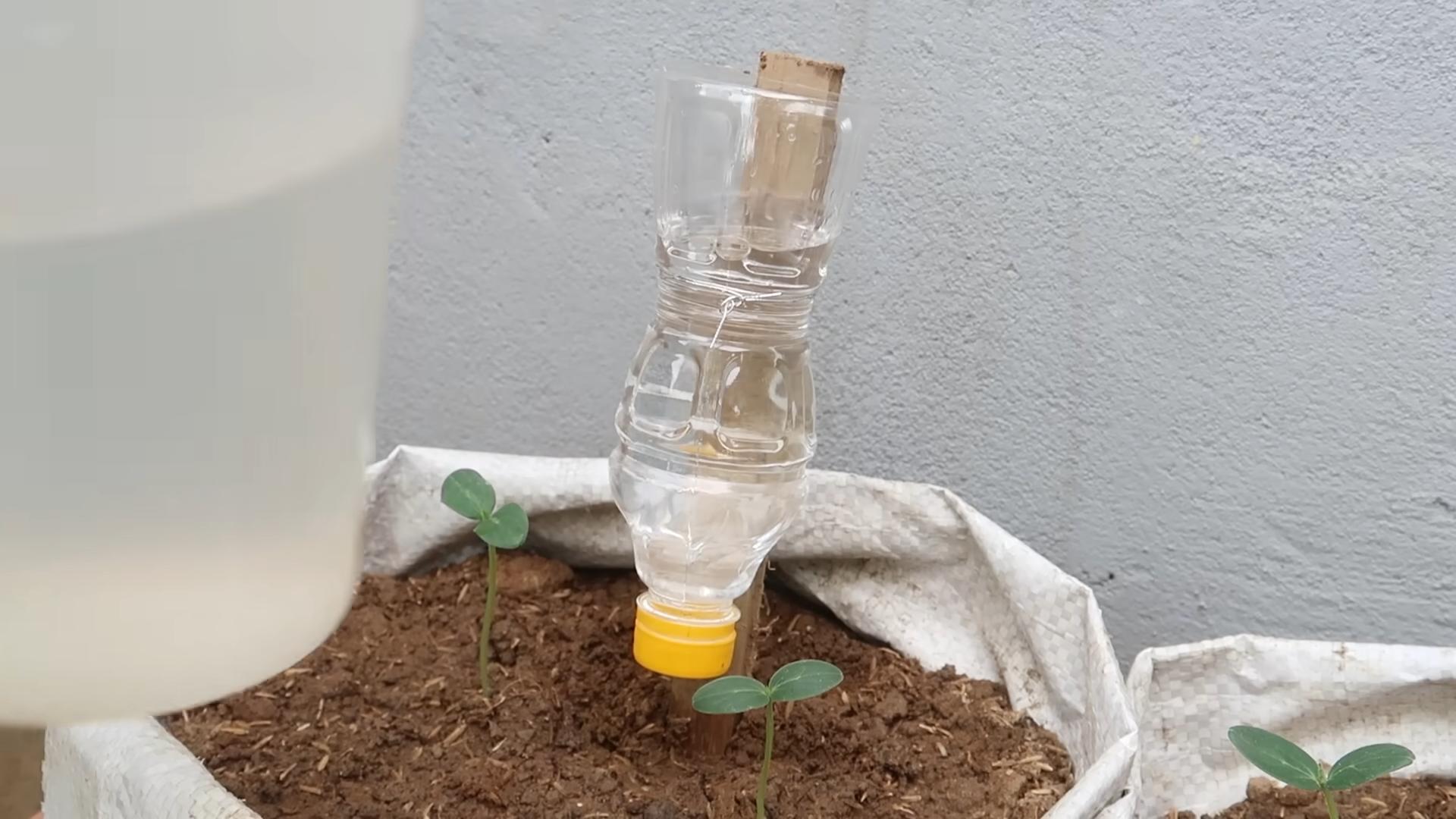
Conclusion
So, there you have it! Growing cucumbers at home is not only achievable, but it’s also incredibly rewarding. Forget those bland, store-bought cucumbers that lack that fresh, crisp bite. With a little effort and the right approach, you can cultivate a thriving cucumber patch right in your backyard, on your balcony, or even indoors.
This DIY guide has armed you with the knowledge to bypass common pitfalls and unlock the secrets to a bountiful harvest. We’ve covered everything from seed selection and soil preparation to watering techniques and pest control, ensuring you’re well-equipped for success. The satisfaction of biting into a cucumber you’ve nurtured from seed to fruit is truly unparalleled.
Why is this DIY trick a must-try? Because it offers a superior product, saves you money, and connects you with the natural world in a meaningful way. Imagine the delicious salads, refreshing drinks, and tangy pickles you can create with your homegrown cucumbers! Plus, you’ll know exactly what went into growing them, avoiding any unwanted chemicals or pesticides.
Consider these variations to personalize your cucumber-growing experience:
* Vertical Gardening: If space is limited, explore vertical gardening techniques. Cucumbers thrive on trellises, saving space and improving air circulation.
* Container Gardening: Choose a large container with good drainage and select bush or compact cucumber varieties for container gardening.
* Companion Planting: Plant cucumbers alongside beneficial companions like marigolds (to deter pests) or beans (to fix nitrogen in the soil).
* Pickling Cucumbers: If you love pickles, dedicate a portion of your garden to pickling cucumber varieties, which are smaller and have thicker skins.
* Lemon Cucumbers: For a unique twist, try growing lemon cucumbers. These round, yellow cucumbers have a mild, slightly sweet flavor.
Don’t be intimidated by the prospect of gardening. Growing cucumbers at home is a journey of learning and discovery. Embrace the challenges, celebrate the successes, and most importantly, have fun! We encourage you to take the plunge and experience the joy of harvesting your own fresh, flavorful cucumbers.
We’re confident that with this guide, you’ll be well on your way to a successful cucumber harvest. Now, it’s your turn! Try this DIY trick and share your experiences with us. We’d love to hear about your successes, your challenges, and any tips you’ve discovered along the way. Share your photos and stories in the comments below! Let’s build a community of cucumber-growing enthusiasts!
Frequently Asked Questions (FAQ)
What are the best cucumber varieties to grow at home?
Choosing the right cucumber variety is crucial for success. For slicing cucumbers, consider ‘Marketmore 76’ or ‘Straight Eight’. These are classic varieties known for their smooth skin and mild flavor. For pickling, ‘National Pickling’ and ‘Boston Pickling’ are excellent choices. If you have limited space, bush varieties like ‘Spacemaster’ or ‘Bush Champion’ are ideal for containers. ‘Lemon Cucumber’ is a fun and unique option with a mild, slightly sweet flavor. Consider your local climate and growing conditions when making your selection.
How much sunlight do cucumbers need?
Cucumbers are sun-loving plants and require at least 6-8 hours of direct sunlight per day. Insufficient sunlight can lead to stunted growth, reduced fruit production, and increased susceptibility to diseases. Choose a location in your garden that receives ample sunlight throughout the day. If you’re growing cucumbers indoors, supplement with grow lights to ensure they get enough light.
What type of soil is best for growing cucumbers?
Cucumbers thrive in well-drained, fertile soil that is rich in organic matter. The ideal soil pH is between 6.0 and 7.0. Before planting, amend your soil with compost, aged manure, or other organic materials to improve drainage, fertility, and water retention. Avoid heavy clay soils, as they can become waterlogged and inhibit root growth. If you have clay soil, consider growing cucumbers in raised beds or containers with a well-draining potting mix.
How often should I water my cucumber plants?
Cucumbers need consistent moisture, especially during hot weather and fruit development. Water deeply and regularly, aiming to keep the soil consistently moist but not waterlogged. A good rule of thumb is to water every 2-3 days, or more frequently during dry spells. Use a soaker hose or drip irrigation to deliver water directly to the roots, minimizing water loss through evaporation and reducing the risk of fungal diseases. Mulching around the plants can also help retain moisture in the soil.
How do I prevent pests and diseases from affecting my cucumber plants?
Pest and disease prevention is essential for a healthy cucumber crop. Regularly inspect your plants for signs of pests, such as aphids, cucumber beetles, and squash bugs. Handpick pests or use insecticidal soap or neem oil to control infestations. To prevent fungal diseases like powdery mildew and downy mildew, ensure good air circulation around your plants, avoid overhead watering, and apply a fungicide if necessary. Companion planting with marigolds can help deter pests, while planting disease-resistant varieties can reduce the risk of disease outbreaks.
When should I harvest my cucumbers?
Harvest cucumbers when they are young and tender, before the seeds become too large and the skin becomes tough. The ideal size for harvesting depends on the variety, but generally, slicing cucumbers should be harvested when they are 6-8 inches long, while pickling cucumbers should be harvested when they are 2-4 inches long. Use a sharp knife or pruning shears to cut the cucumbers from the vine, leaving a short stem attached. Regular harvesting encourages continued fruit production.
Can I grow cucumbers indoors?
Yes, you can grow cucumbers indoors, but it requires some extra effort. Choose bush or compact varieties that are well-suited for containers. Provide adequate sunlight (at least 6-8 hours per day) or supplement with grow lights. Use a large container with good drainage and a well-draining potting mix. Water regularly and fertilize with a balanced fertilizer. Hand-pollinate the flowers if necessary, as indoor cucumbers may not be pollinated by insects.
What are some common problems when growing cucumbers and how can I fix them?
Some common problems include yellowing leaves (often due to nutrient deficiencies or overwatering), blossom end rot (caused by calcium deficiency), and pest infestations. Address nutrient deficiencies by fertilizing with a balanced fertilizer. Ensure proper watering practices to avoid overwatering or underwatering. Control pests with insecticidal soap or neem oil. For blossom end rot, add calcium to the soil or use a calcium-containing foliar spray.
How do I encourage more cucumber production?
To encourage more cucumber production, ensure your plants receive adequate sunlight, water, and nutrients. Regularly harvest the cucumbers to prevent them from becoming overripe, which can signal the plant to stop producing new fruit. Prune the vines to improve air circulation and encourage branching. Hand-pollinate the flowers if necessary, especially if you’re growing cucumbers indoors or in areas with limited insect activity.
What is the best fertilizer for cucumbers?
Cucumbers benefit from a balanced fertilizer with a higher phosphorus content to promote fruit development. A fertilizer with an NPK ratio of 5-10-5 or 10-10-10 is a good choice. Apply fertilizer according to the package instructions, typically every 2-3 weeks during the growing season. You can also supplement with compost tea or other organic fertilizers to provide additional nutrients and beneficial microbes to the soil.

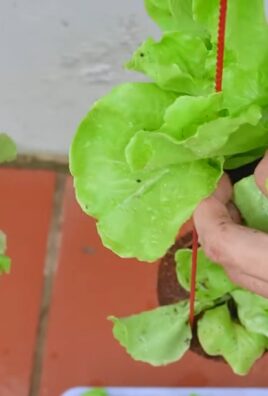
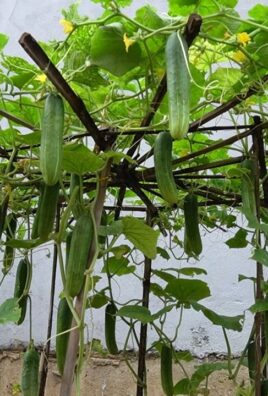
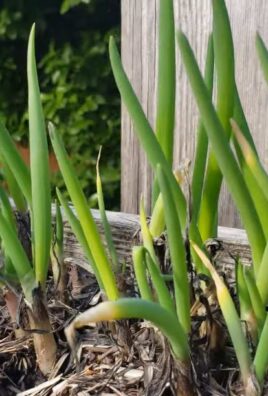
Leave a Comment